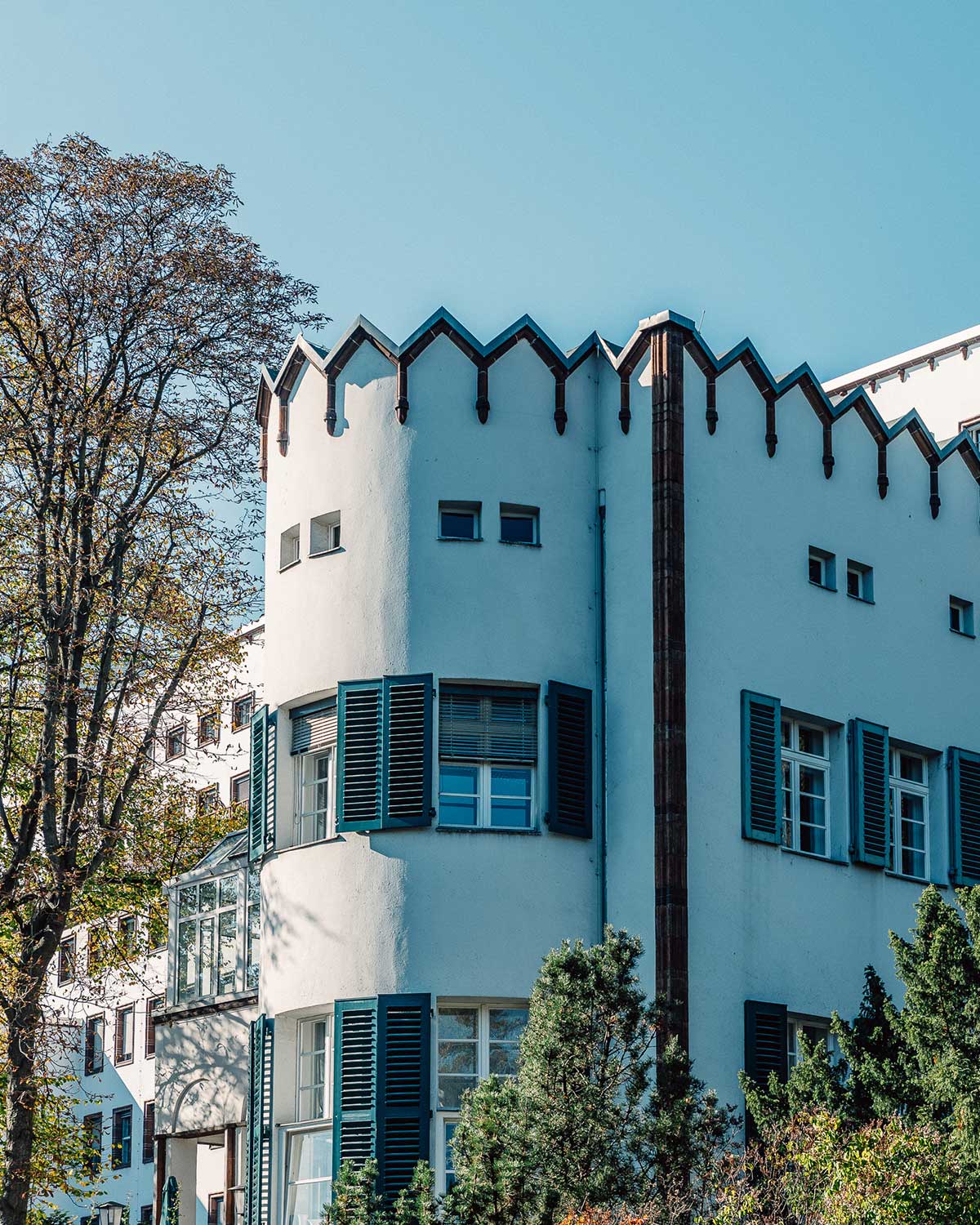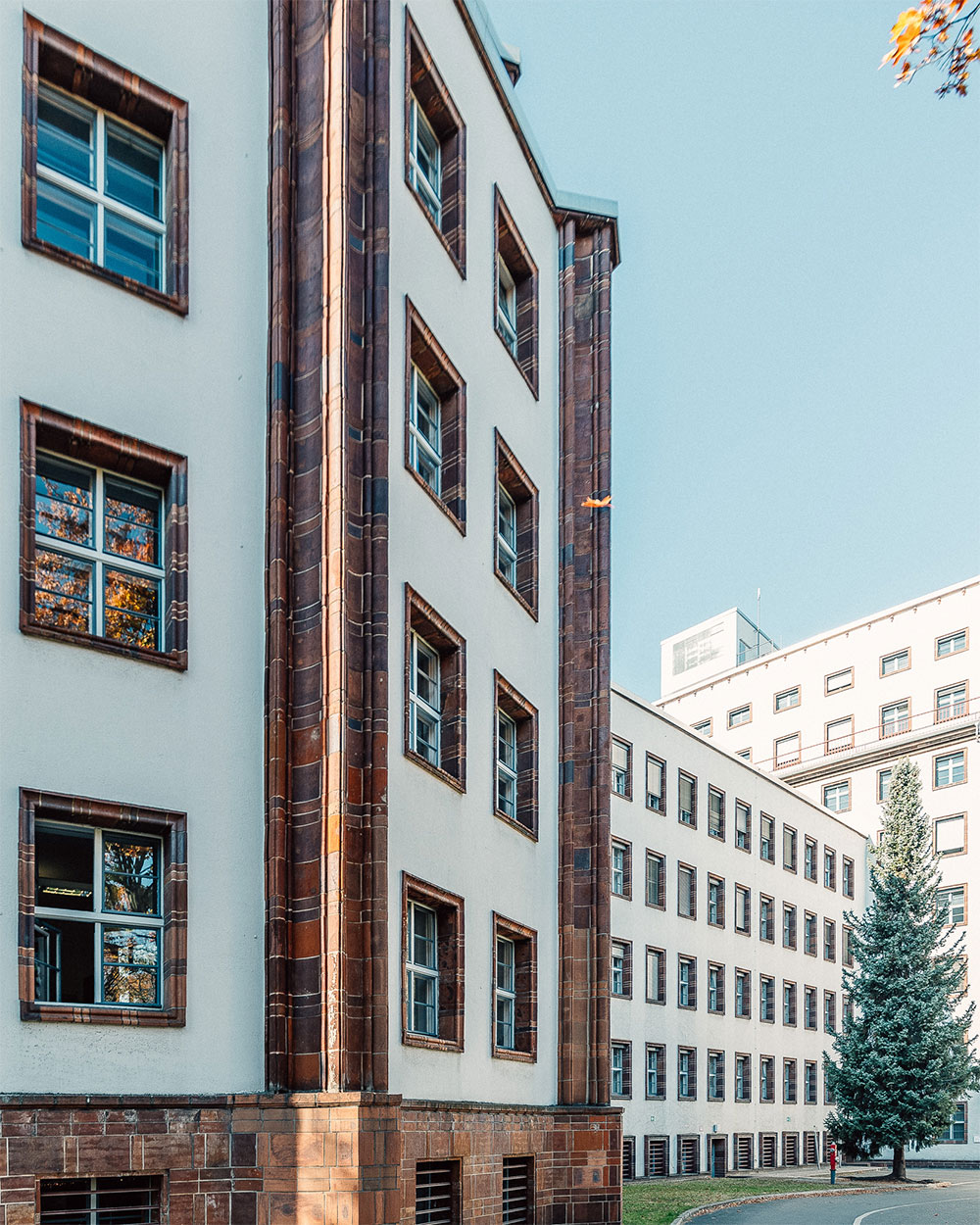Expressionism
meets Modernism

A MIRACLE OF SPACE, A STRUCTURE OF STEEL
The building of the former Oberpostdirektion counts amongst the major works of Berlin expressionism. It is a synthesis of the arts – just like other examples of expressionist architecture: it stands out. It’s an eye-catcher. It’s edgy, it’s appealing. Like the Chilehaus in Hamburg, the Hoechst building in Frankfurt or the Ullsteinhaus in Berlin Tempelhof.
Impressive graphic effects on the walls, striking reddish-brown terracotta bricks on the façade, two annexes and the polygonal tower – the listed office building draws on the toolbox of expressionism and extends it all the way to modernism. An interplay of geometry, decorative features, and elaborate functionality. The office building, inaugurated in 1928, is made up of brick walls on the outside. On the inside, however, a supporting structure of steel provides ample freedom for interior design. Openness, light, flexibility – still today, these are the most important prerequisites for the planning of modern office spaces.
One of the architectural highlights is the main staircase on Dernburgstraße – with five storeys and a circular arrangement of tile-clad, eighteen-metre-high pillars. There was no tinkering in the construction of Oberpostdirektion: it is an epitome of big thinking. It’s more than a house, it’s a castle. A fortress that looks back on 100 years of Berlin history. Indestructible, timeless, ready for the next 100 years.
From 1948 to 1971, the building accommodated the Postscheckamt Berlin West, its last tenant being Deutsche Telekom.
A RENOWNED PROJECT BY ARCHITECT WILLY HOFFMANN
Willy Hoffmann (1878-1977) was successful. Starting as a simple architecture student at the Technical University in Charlottenburg, he went on to become a Civil Engineer, a Building Officer, and a Senior Building Officer for the Post. In the 20s and 30s in Germany, this was a stellar career. Many of the buildings he designed, such as the Oberpostdirektion in Berlin Charlottenburg, are now listed buildings. Created in expressionist style and supported by an internal steel skeleton structure, the building was one step ahead of its time: its construction method provided more freedom for interior design. After all, Willy Hoffmann had to create office spaces for at least 1,000 employees, along with meeting rooms, a ballroom, and a canteen.
The impressive building complex – a renowned project designed by the architect from Halle – was constructed from 1925-1928 on a site measuring 15,485 square metres. The Reichspost wanted to establish a new building for the central postal administration, as the operations of the OPD were spread across twenty different locations in Berlin. Due to the inflation in 1923, the construction started with a three-year delay. Hence the festive inauguration could not take place until May 1928.

